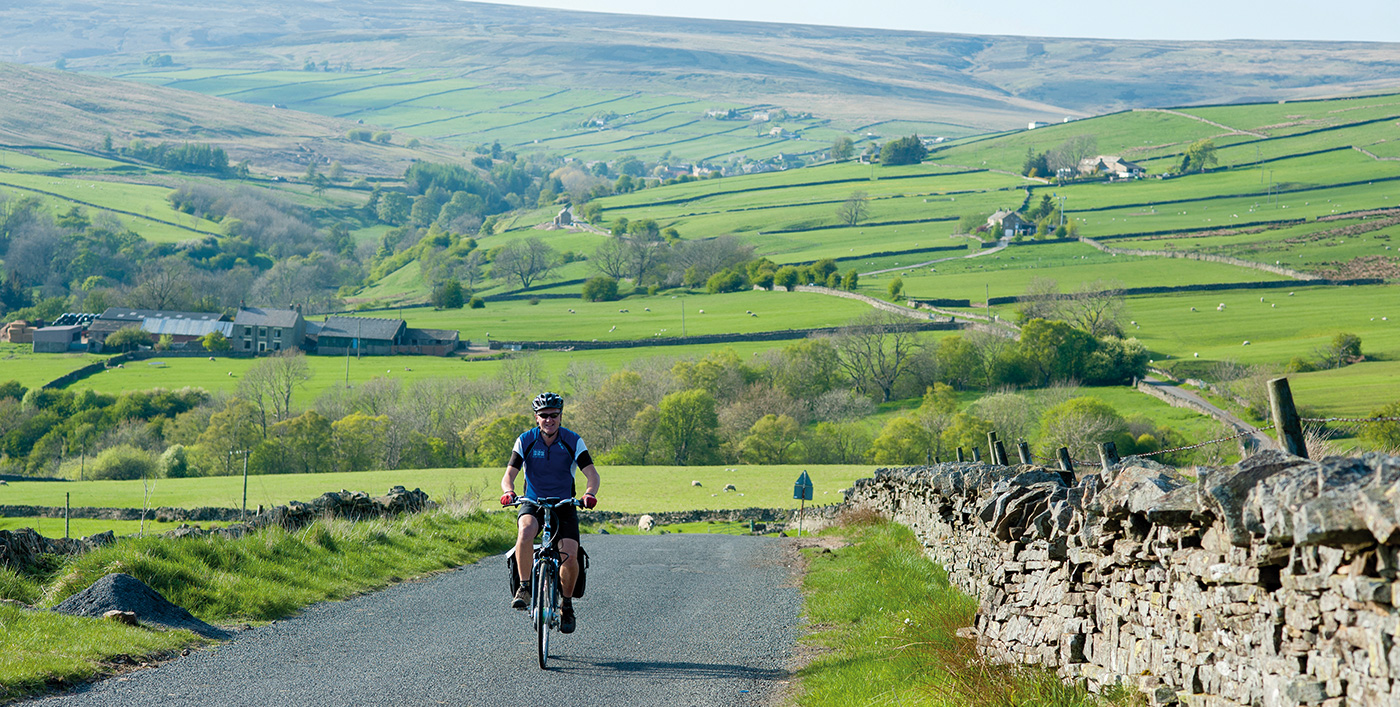Weekender: Devon Coast to Coast

Start/finish: Plymouth train station (SX 4660 5414) to Ilfracombe Harbour (SS 5263 4785).
Maps: OS Landranger 180, 191, 201.
Ride length: 157km (97.6 miles).
Climbing: 2,064m.
Bike type: touring, hybrid, gravel, a rugged road bike or a long-suffering e-bike like mine.
Ride level: regular.
In any list of the top routes on Britain’s National Cycle Network, the Devon Coast to Coast is reliably there. Running 99 miles from the south coast at Plymouth to Ilfracombe on the north, it manages to span one of the bumpiest parts of the country largely (but not entirely) via gentle gradients on a number of rail trails.
The Devon Coast to Coast stitches together several routes, including the Granite Way, Drake’s Trail and the Tarka Trail. It also offers a generous collection of breathtaking views.

Once you’ve zig-zagged out of Plymouth following the little blue and red NCN signs, you climb gradually to meet the edge of Dartmoor on the first rail trail, via dripping tunnel and dizzying bridge, flying high above the tree canopy.
The moors are delightful. In the middle, somewhere around Sheepwash, are some very stiff little Devonian hills, before more glorious rail paths take you via flatter countryside and gorgeous estuary, via Okehampton, to Barnstaple and then on to Ilfracombe on country roads.
This is a route I’d happily recommend to family cyclists with child passengers (they might need e-assist). As Ilfracombe lacks a rail service, I cut the ride short and boarded a train home at Barnstaple. If you finish at the coast, it’s about 15 miles back to Barnstaple station.

1. Drake’s Leat
Approaching Dartmoor your route follows a former tramway and an intact 16th-century waterway. Two ‘leats’ carried fresh water from three rivers to the expanding docks at Devonport and Plymouth. Construction was overseen by Sir Francis Drake who, legend has it, rode his horse ahead of the water all the way to Plymouth.
2. Norman Fort, Lydford
A medieval castle with its own prison, peering into its ruins takes you back almost a full millennia to its founding after 1066. Dismounting to wander around the site, including the later Norman additions, gives you a breather after some stiff climbs.

3. Farmer’s gates near Sourton
On the rail trail near Sourton and Prewley Moor, two gates bookend a liminal space of rocks and saplings, which the farmer retains the right to lock at their pleasure. If it’s closed, follow the detour map on the gates.
4. Meldon Viaduct
This wonder of Victorian engineering was built in 1874 and spans 164m between steep hillsides. Beneath it are former mineral mines. Almost 50m high, and with views towards Dartmoor and Meldon Dam and reservoir, this truly is breathtaking.

5. Fremington
Delightful riverfront spot with a café in the former railway station. Grab some refreshments and look out over the water. The waterfront stretch from Bideford is a delight, affording plenty of photo opportunities.
6. Barnstaple
This historic town grew rich on wool imports from the 14th century, and glimpses of its age – and splendour – can be sniffed out. Peek in the restaurant at 62 The Bank for a jaw-dropping, intact Jacobean plasterwork ceiling, completed in 1620 and featuring an array of creatures, including dizzy-looking elephants.
Cycle magazine
Every two months Cycling UK members receive Cycle magazine, filled with interesting and informative articles, news and reviews for all cyclists.
Members can read the magazine in full online; non-members can read selected highlights.


